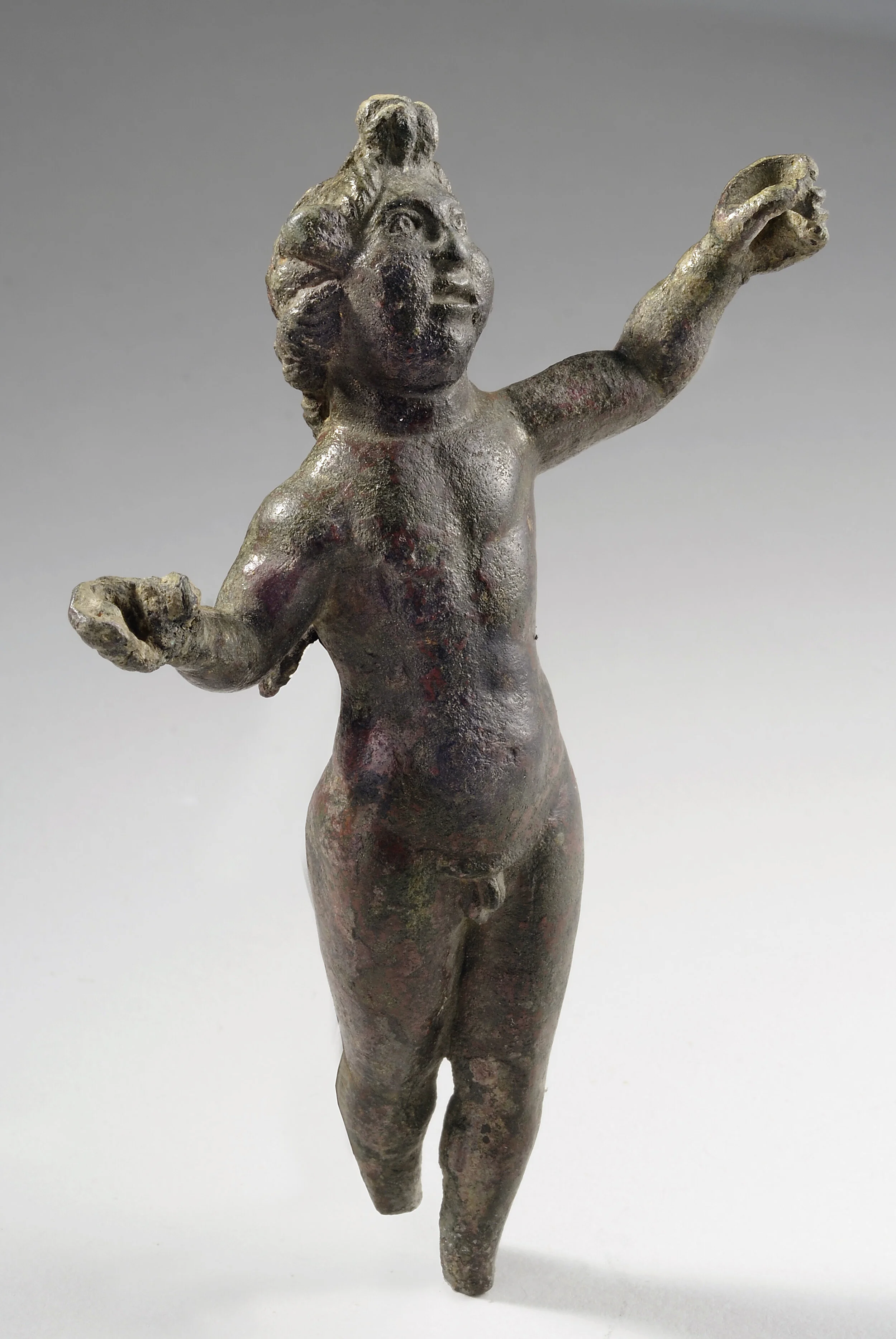Ancient Roman Bronze Attis with a Cornucopia



Ancient Roman Bronze Attis with a Cornucopia
Roman, 1st - 2nd century A.D.
Bronze
H: 18.7 cm (7.36 in)
Serial: 13770
This piece certainly once belonged to larger object. Although the nature of the larger object cannot be determined, it is possible that the end of the cornucopia may have been mounted by a rod or may have served as a support for a candelabrum, for example.
The figure is of a young man, standing on the tips of his toes, as if he were mid-dance step: he is dressed in Near Eastern garb, comparable to that worn on figures which appear on coins as well as in marble and bronze statuary from Anatolia. He wears a jacket with long sleeves, fastened on his chest by a fibula in the shape of a gorgon head. The bottom of his stomach is uncovered: the tunic looks windblown, puffing out around his shoulders. His legs are covered in straight pants, fastened behind with five buttons; he wears short, soft-looking shoes (made of cloth or soft leather). His costume is completed by the Phrygian felt cap. From under the cap, we can see the boy’s long, curly hair.
The boy’s ethereal nature is highlighted by a pair of small spread wings, which are attached to his back. In his hands (he holds his left hand behind his head, his right is extended before him), he holds a cornucopia: this attribute, along with the boy’s Near Eastern garb and his pose allows us to identify him as Attis, the young shepherd with whom Cybele, the great Phrygian goddess, mother of the gods and of the earth, mistress of the wild animals, fell madly in love. Cybele’s cult originated at Pessinos in the mountains of Asia Minor and spread first to the Greek world and, later, to Rome, where it was officially adopted by the Senate in 204 B.C.
The cult, in its primitive manifestation (the cult of pine, of stones, of wild beasts), was characterized by orgiastic, mystical ceremonies, as well as by savage, bloody rites (including the mutilation and emasculation of its priests). In Rome during the Imperial period, Attis, Cybele’s divine consort (according to myth, Attis was himself emasculated), had his own official cult whose popularity waxed as Cybele’s own cult waned. Under Claudius and the Antonines, new spring festivals, heavily influenced by the Phrygian tradition, celebrated the death and resurrection of Attis, symbolizing the yearly rite of rebirth.
This iconography, showing Attis holding a cornucopia, is known, but is extremely rare: Attis is often shown in a group with Cybele, sitting on a thrown, accompanied by lions. When he is depicted alone, he is usually shown playing musical (a syrinx or tambourine), carrying a sheep on his shoulders, holding a shepherd’s staff (the lagobolon) or is simply dancing; sometimes he shown lounging or asleep
This statuette is complete, except for the end of the cornucopia (horn of plenty) which is lost. The surface of the piece is covered with a dark, uniform patina. The eyes are inlaid with silver, though the pupils have been lost.
PROVENANCE
Bonham’s, London, 21 April 2001, lot 48
BIBLIOGRAPHY
Lexicon Iconographicum Mythologiae Classicae (LIMC), Zurich - Munich, vol. III, 1986, s.v. Attis, p. 29, n. 135-137.







